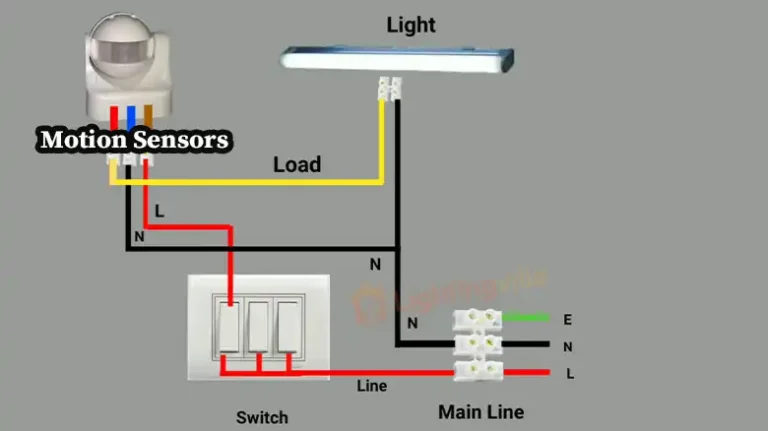Why Does My Ceiling Fan Light Turn off by Itself? Reasons and Solutions
Sometimes electrical issues can be particularly difficult and infuriating to diagnose. As a homeowner, facing an electrical issue that you can’t find out is the most frustrating. A ceiling fan light is a thing you can suffer a lot of issues with it because a ceiling fan light may have problems with different cases. However, the most common problem with a ceiling fan light is when it gets turned off.
There can have so many reasons for turning off your ceiling fan light. So, when you face that issue, don’t worry and try to figure out the exact reason. If you don’t know why your ceiling fan light turns off by itself, then you are in the perfect place. Here I’m trying to explain the cause and help you figure out why.

Why Does My Ceiling Fan Light Turn off by Itself?
To figure out the exact issue, you need to check your bulb contacts to be sure they are snug. Then observe that you have the appropriate bulb in there. If your ceiling fan light is remote-controlled, you must check for any other remotes that can interfere with the light.
Your ceiling fan light turns off automatically due to radio interference, bent or dirt bulb contacts, multiple switches, mismatched wattage, or even the malfunctioning circuit breaker. Let’s consider the reasons elaborately.
Reason 1: Radio Interference
When a ceiling fan light is remote-controlled, it might be experiencing interference from the other remotes in that house. Moreover, manufacturers set factory remotes to similar frequencies that can interfere with another remote. After interfering with other remotes, your ceiling fan light can be turned off automatically. So, it is crucial to check if the issue is not occurring for radio interference.
Reason 2: Bent or Dirty Bulb Contacts
The manufacturers usually don’t make the housing that you screw into your light bulb the most solid material. So, the housing can get dirty, or sometimes it can contact and expand with heat. Whenever these things happen, the housing can’t contact the bulbs when it heats up. So, this can be a reason that your ceiling fan light turns off. You should consider that matter and figure out if it doesn’t affect your light.
Reason 3: Multiple Switches
Depending on your house, certain lights can be controlled by multiple switches. Sometimes, these switches may or may not be in your room the light is in. Since all houses are different and have different reasoning for their wiring, it is a common thing. However, you need to check out the problem because multiple switches sometimes can arise as default in your ceiling fan light.
Reason 4: Mismatched Wattage
When the ceiling fan light you have on is not the perfect wattage, it can cause all kinds of issues. Moreover, when a light lets in so much power for the filament to handle, the light can easily overheat and turn off automatically. So, you must select the perfect wattage for your light. Otherwise, you will face this hassle and a limitless awkward situation with the ceiling fan light.
Reason 5: Malfunctioning Circuit Breaker
For electricity in every house, the circuit breaker is a failsafe. When any power malfunction occurs, the circuit breaker will cut off the electricity in that area. But when the circuit breaker is malfunctioning, it can turn your ceiling fan light off. So, consider your circuit breaker and check if there is any malfunctioning in your circuit breaker.
What Should You Do When Your Ceiling Fan Light Can not Stay on? (Solution)
Since it is a very big problem when you want to keep the ceiling fan light on, but it automatically turns off again and again. So, you must know the method to fix the problem immediately. But you can’t move forward when you don’t know how to fix the issue.
Step 1: Check the Light
Check your light bulb first if it has burned out or not. If so, you need to replace your light bulb. But if the light bulb is not burnt out then you must check to see if your light is tight in the socket or not. If it is tight, you need to immediately make it tight with a screwdriver.
Step 2: Check the Metal Socket Tab
Check the metal socket tab that is located on the bottom center of the socket. Because it is important to see if the metal socket tab has become flatted or not. If so, you need to blend it back up gently to make contact with your bulb.
Step 3: Check the Connections of the Switches
Now, check the connection of your switches. Because you need to be sure that the switches are tight enough. After that shut off the power and check the wire connections at your light fixture. Even you must check the connections of your breaker panel. If you have doubts about these connections, you can examine them with a qualified electrician.
Here I’m providing a video link with which you can simply fix your ceiling fan light and get the proper service from your light. I hope you can solve it without any hassle with this video. But after watching the video, if you can’t gain enough confidence or understand the method, you must take help from an electrician or expert to fix it.
Frequently Asked Questions
Can MY Faulty Ceiling Fan Cause a Fire?
Yes, it is quite possible to cause a fire due to a faulty ceiling fan. Moreover, inadequate wiring leads to overheating of your fan motor and subsequent failure. If you don’t properly install or overload the wiring, it can overheat and start a fire. So, it is essential to have an electrician or expert check the electrical system when installing a new ceiling fan.
How Long Does a LED Light in a Ceiling Fan Last?
In general, LED lights last between 50,000 to 100,000 hours. Again, you can benefit from an LED ceiling fan; you don’t need to change the lights as frequently as one using incandescent. In addition, the LED lights in your ceiling fan run daily with no breaks. Even they can last long for six years, and this is another benefit.
Why Does the Ceiling Fan Light Not Turn off with the Remote?
If your ceiling fan light does not turn off with the remote, reset your ceiling fan remote control immediately. Because when your ceiling fan remote just turns off the fan but can’t turn off the lights, it is a serious problem but easy to recover. You must turn your ceiling fan off and remove the batteries from your remote control. Now, wait about ten seconds and replace the batteries in your remote control. After that, simply turn the power back on.
Are My Remote Control Ceiling Fans Reliable?
Yes, of course, a remote control ceiling fan is reliable. However, the remote control is easier for an expert to install. Again, the remote control is a great option for houses with no access to your ceiling. But you must remember that sometimes you need to consider the remote control a less reliable option as it can get broken, lost, or sticky quickly. You must have to replace the batteries of the remote control fans now and then.
Which Wire Controls the Lights on My Ceiling Fan?
Since there are green, white, black, and blue wires, the blue wire controls the lights on your ceiling fan. Whereas black wire is for your fan and white wire is neutral. Again, the green wire is for the ground.
Conclusion
Sometimes you can have a question about how many wires you require for your ceiling fan with light. When installing two ceiling fans, you must have two different switches, each feeding one light kit, and fan. Again each feeds its power supply line. However, it is ideal to have a 120-volt power supply line that has two wires. Here the two wires refer to the neutral wire and a common terminal.
In addition, the ceiling fan remotes don’t interfere with each other. Remember that most ceiling fan remote controls come with a factory-set frequency. When your two or more ceiling fans have the same frequency, only one remote of your fan controls the ceiling fans at the same time, which may have a range of 40 to 50 feet. In comparison, the other remote is messing with the ceiling fan.






![The Ceiling Fan Light Won’t Turn Off [Fix!]](https://lightingvilla.com/wp-content/uploads/2023/01/Ceiling-Fan-Light-Wont-Turn-Off-768x431.jpg)